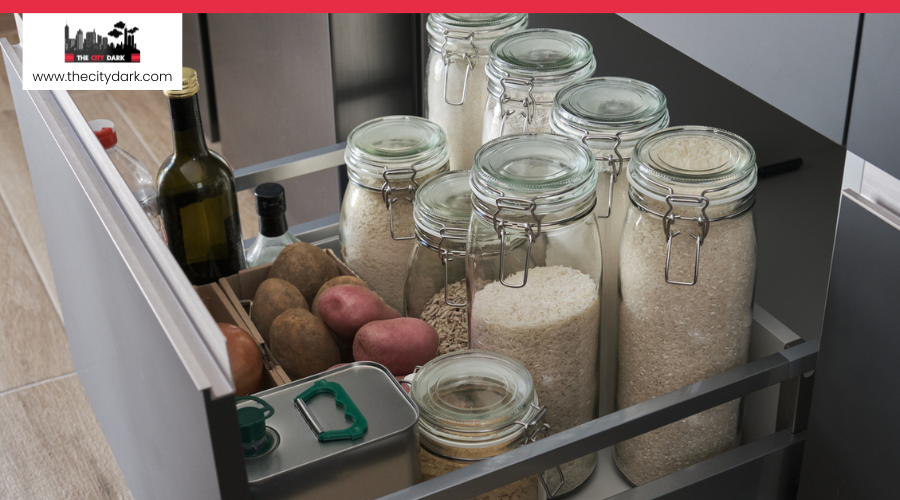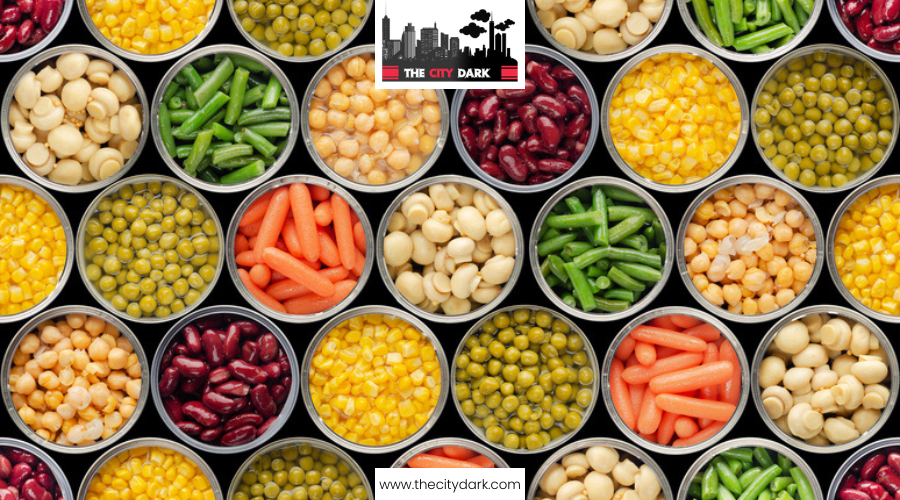Root Cellar Ideas for Natural Food Storage Without Electricity
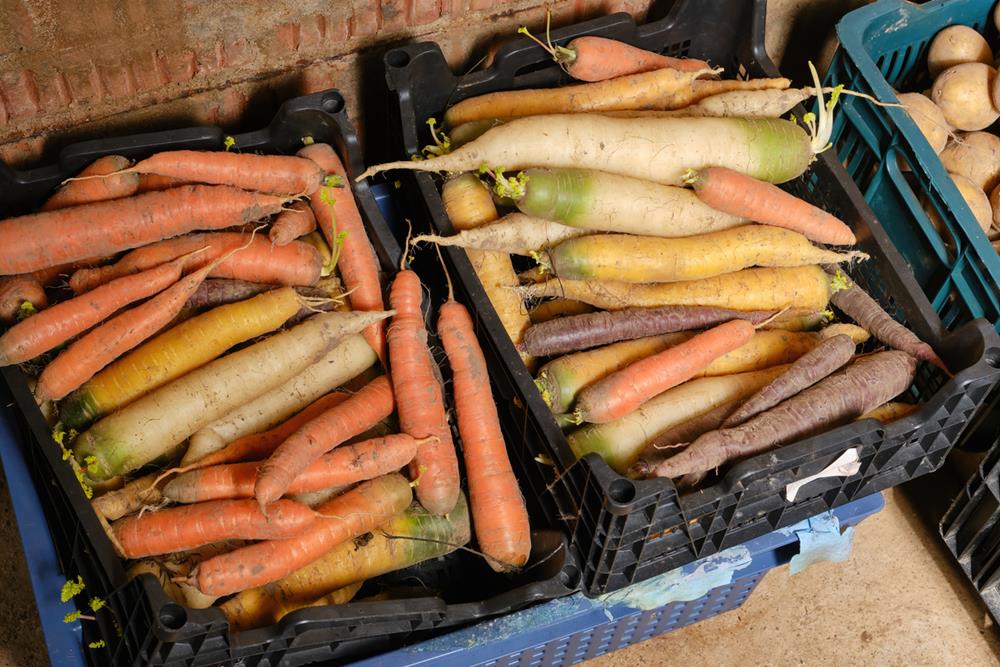
Looking for a way to store food without relying on electricity? A root cellar might be the perfect solution. For generations, people have used root cellars to keep fruits, vegetables, and other perishables fresh by taking advantage of the earth’s natural cooling and insulating properties.
In this article, we’ll explore practical root cellar ideas—from simple basement setups to creative outdoor designs—that help you preserve food the old-fashioned way. Whether you're into homesteading, prepping, or just want to cut down on food waste, these ideas can help you build a reliable, energy-free storage system.
| Category | Key Ideas | Purpose |
|---|---|---|
| Concept | Uses the earth's natural cooling and insulation to store food between 32°F–40°F with high humidity (85–95%) | Preserve food without electricity; maintain freshness and prevent spoilage |
| Benefits | Energy-free storage, cost savings, long shelf life for produce, food security, and self-reliance | Reduces dependence on modern refrigeration and power supply |
| Ideal Conditions | Cool temperature (32–40°F), high humidity (85–95%), darkness, proper ventilation | Extend the freshness and quality of stored produce |
| DIY Design Ideas |
| Creative, budget-friendly storage options using existing or recycled materials |
| Root Vegetable Storage | Use straw or dry leaves in containers; allow airflow; check for spoilage regularly | Keep root crops fresh and avoid rot |
| Alternative Storage Methods |
| Expand variety of foods stored and extend preservation |
| Location Tips | Place below frost line, on shaded or north-facing slope, with well-drained soil; easy to access | Maintain consistent cool temps and humidity year-round |
| Maintenance | Monitor temperature and humidity, check airflow, inspect for spoilage, adjust seasonally | Ensure long-term effectiveness of the root cellar |
| Food Storage Tips |
| Prevent contamination and preserve quality of stored items |
Understanding the Concept of Root Cellars
Before refrigerators, people relied on root cellars to keep their food fresh—and the idea still works today. A root cellar uses the earth’s natural insulation to maintain cool, stable temperatures, typically between 32°F and 40°F. These conditions are perfect for storing root vegetables, fruits, and other produce without the need for electricity.
In addition to cool temperatures, root cellars maintain high humidity levels—usually between 85% and 95%—which helps prevent stored food from drying out and losing quality.
They’re usually built underground or into hillsides, using materials like stone or wood to boost insulation. The result is a dark, humid environment that naturally preserves food for months.
Root cellars have been used for centuries and were once a staple of everyday life. Today, they’re making a comeback as people look for simple, sustainable ways to store food.
The Benefits of Root Cellaring

Root cellaring offers numerous benefits that make it an attractive option for food storage. By maintaining stable temperatures and high humidity, a root cellar extends the shelf life of your fresh produce without electricity.
Imagine storing your seasonal vegetables for months, ensuring a steady supply during those long winter months. This method of food preservation keeps your food fresh, nutritious, and secure.
- Cost-Effective: Save on energy bills and buy produce in bulk from local farms.
- Food Security: Store large quantities of vegetables for an extended period, crucial during supply chain disruptions.
- Self-Reliance: Enjoy homegrown vegetables year-round, reducing dependence on grocery stores.
With a root cellar, you're not just storing food—you're embracing a sustainable and resilient lifestyle.
Essential Conditions for Root Cellars

To fully harness the benefits of root cellaring, understanding the critical conditions for an effective setup is key.
Maintaining a cool temperature between 32 and 40 degrees Fahrenheit guarantees that you store food without the risk of freezing. High humidity, ranging from 85-95%, is imperative to prevent moisture loss, helping your produce stay fresh.
Darkness plays a significant role, as light exposure can lead to rapid spoilage. Proper ventilation is fundamental for good air circulation, which regulates temperature and humidity, preventing mold growth.
The ideal location for your root cellar is below the frost line, in shaded areas, or on north-facing slopes. These conditions collectively create a perfect environment for preserving your harvest naturally and efficiently.
Creative DIY Root Cellar Designs
Ever wondered how you can create a practical yet budget-friendly root cellar?
Transforming everyday items into groundbreaking storage solutions is easier than you think. To build a root cellar, consider these creative DIY designs:
- Buried Freezer: Repurpose an old freezer as an in-ground root cellar. Bury it in a shaded spot, ensuring drainage and ventilation, to store your food efficiently.
- Earthbag Root Cellar: Use earthbags for a simple build that harnesses natural insulation, keeping your root vegetables fresh.
- Window Well Cellar: Utilize existing window wells to store potatoes and squash, ensuring they remain cool and pest-free.
Consider incorporating natural freezing techniques by choosing locations with consistent cold temperatures, enhancing the efficiency of your root cellar. These designs provide excellent options for keeping your vegetables secure and fresh. With minimal effort, you'll have a reliable place where your food will keep well.
Storing Root Vegetables Effectively
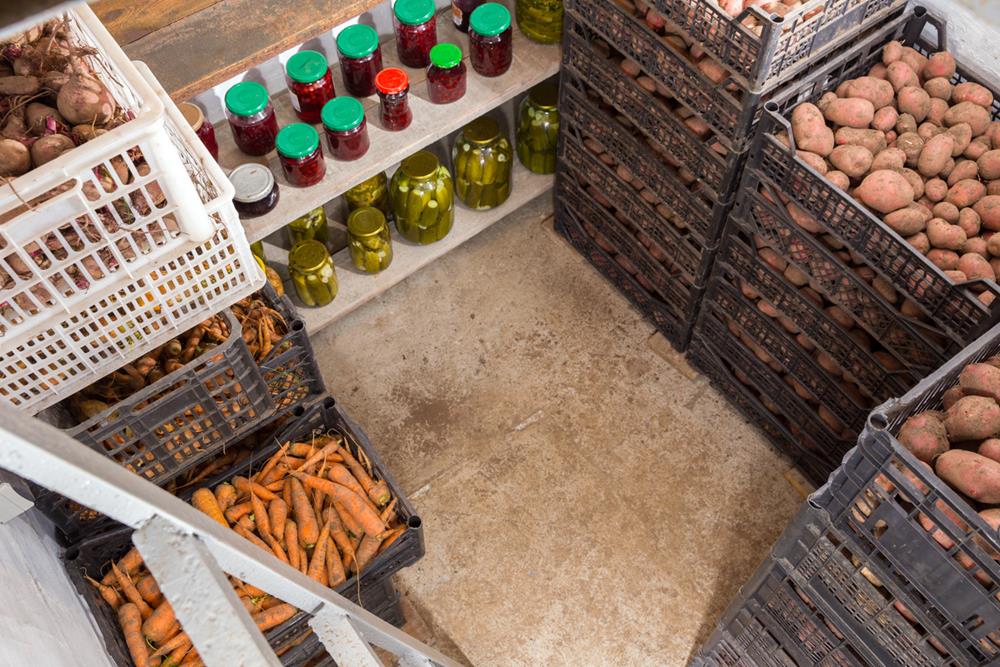
Although storing root vegetables may seem straightforward, guaranteeing they remain fresh and flavorful requires proper techniques.
Initially, make sure your storage area is cool and dark, with temperatures between 0ºC and 10ºC (32ºF to 50ºF). This helps keep root cellar vegetables like carrots, beets, and potatoes from spoiling.
To store well, use a container with a thick layer of straw or dry leaves at the bottom and between layers. This absorbs excess moisture, preventing them from touching and rotting.
Confirm good air circulation to avoid pests and maintain ideal humidity levels around 85-95%. Regularly check the vegetables for signs of spoilage, as one bad potato can ruin the bunch.
These steps will assist you in storing your vegetables effectively.
Alternative Vegetable Storage Methods
Once you’ve mastered storing root vegetables, it’s time to investigate other ways to keep your harvest fresh and flavorful. An effective root cellar isn’t just for root crops; it’s also ideal for a variety of vegetables.
To store vegetables like potatoes, use hessian bags or cardboard boxes in a dark, cool space. Onions and garlic thrive when hung loosely in an airy, dry location.
For a successful root cellar, consider:
- Fermentation: Enhances nutrition; use 2%-3% salt for preserving.
- Layering: A layer of leaves can extend cabbage storage.
- Temperature control: Store winter squash at 10ºC to 13ºC (50ºF to 55ºF).
These strategies guarantee your type of root cellar maintains fresh food, creating a good root storage system for all your produce. Additionally, dried fruits supply concentrated energy and are easy to store, making them an excellent addition for extending the variety of preserved foods in your cellar.
Location Considerations for Root Cellars
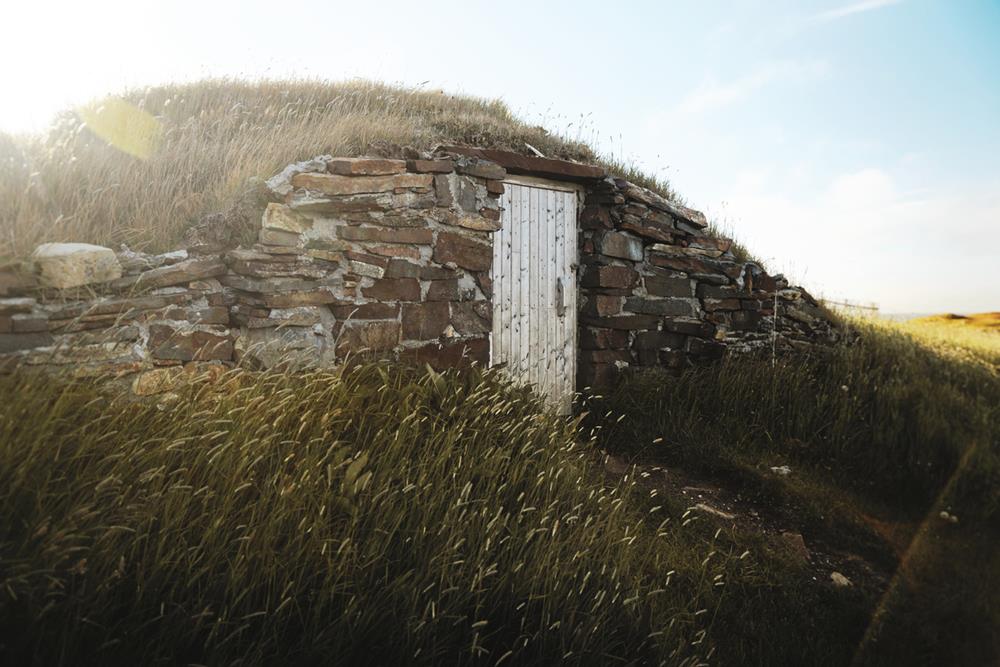
Choosing the right location is key to building an effective root cellar. To maintain stable temperatures, it’s best to place your cellar below the frost line. This helps keep the interior cool and consistent throughout the year.
Look for a shaded area or a north-facing slope to minimize direct sunlight exposure—essential for maintaining a dark, cool environment. The type of soil also matters. Well-drained soil helps control humidity and prevents water buildup, which could spoil your stored food.
Think about convenience too. You’ll want a spot that’s easy to reach year-round, especially if you plan to check on or use your stored produce regularly.
Finally, consider your local climate and landscape. Taking advantage of natural features can enhance your root cellar’s cooling and insulating abilities. With careful planning, you can create a reliable, off-grid storage solution that works in all seasons.
Maintaining Your Root Cellar
To guarantee your root cellar operates effectively, start by keeping a close eye on temperature and humidity levels, which are vital for preserving your food. Aim for 32-40°F and 85-95% humidity.
Inspect stored produce regularly to catch spoilage early and extend its shelf life. A little bit warmer may be okay for certain items, but it's important to maintain good conditions in general.
- Maintain good ventilation: Check for blockages and verify airflow is unobstructed.
- Inspect stored produce: Remove spoiled items immediately to prevent pest infestation.
- Make seasonal adjustments: Add insulation in winter or tweak ventilation during warmer months.
These simple solutions will help you keep your root cellar in top shape, guaranteeing your food lasts longer and stays fresh without electricity.
Tips for Effective Food Storage in Root Cellars
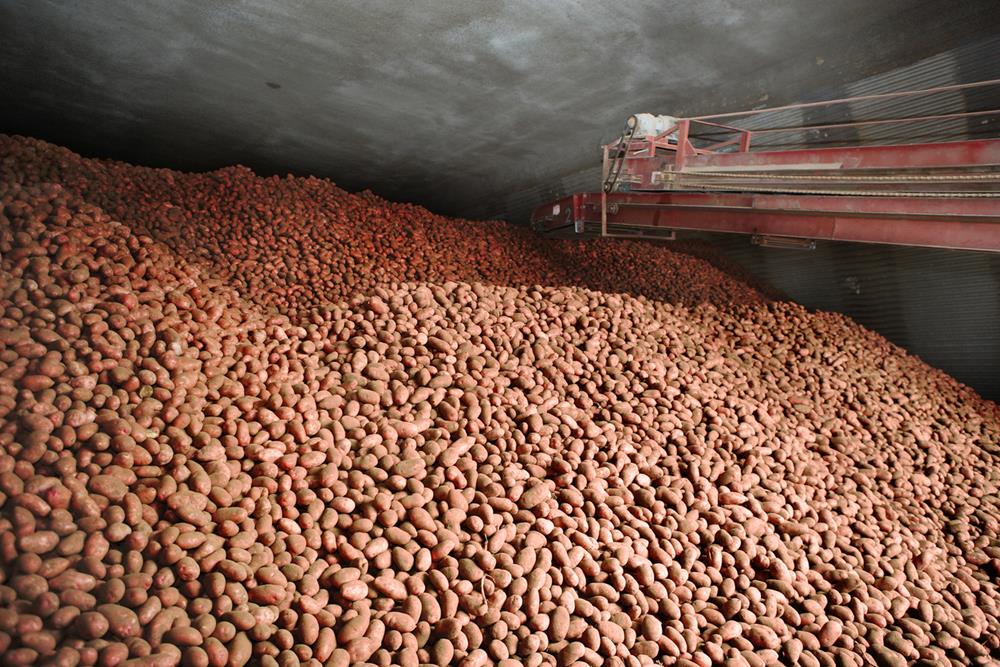
Storing food properly in a root cellar can make all the difference in how long it stays fresh. Follow these key tips to get the most out of your storage space:
Clean and dry your produce before storing it. This helps prevent rot and keeps mold at bay.
Maintain a temperature between 32°F and 50°F (0°C to 10°C)—cool enough to preserve fruits and vegetables without freezing them.
Keep humidity levels between 85% and 95% to prevent produce from drying out. High humidity is especially important for root crops like carrots and potatoes.
Ensure good ventilation to prevent stale air and reduce the risk of mold or mildew.
Space items out so they’re not touching. This helps air circulate and reduces the chance of bruising or cross-contamination.
Check regularly for signs of spoilage or pests, and remove any problem items immediately to protect the rest of your supply.
By sticking to these practices, you’ll extend the life of your stored food and make your root cellar a reliable, low-maintenance storage option.



